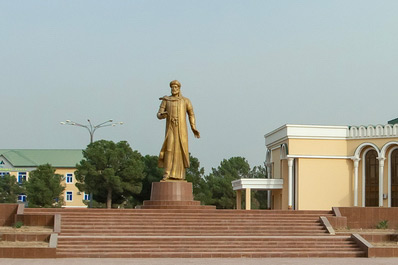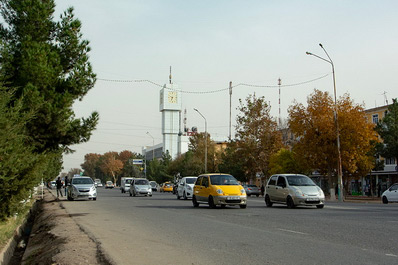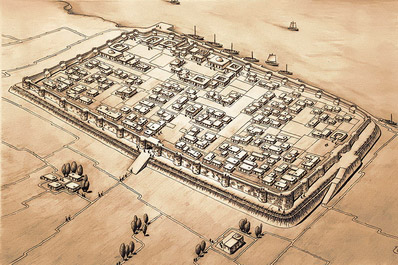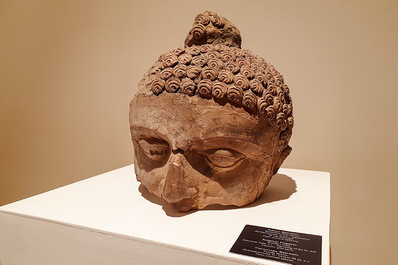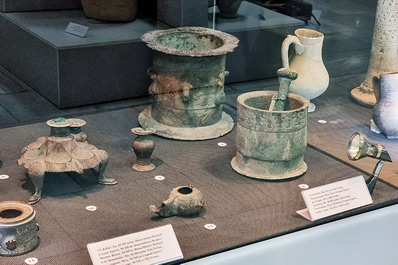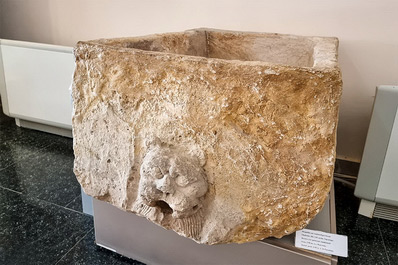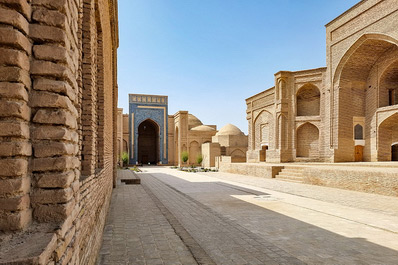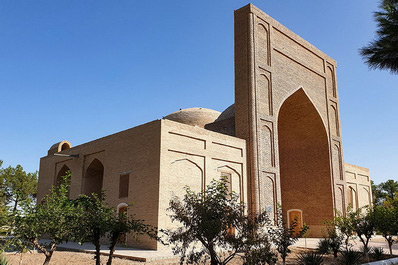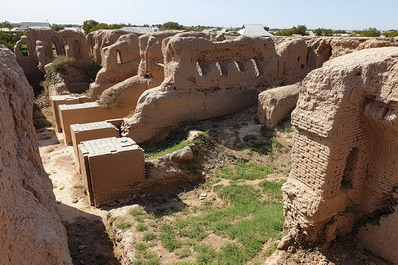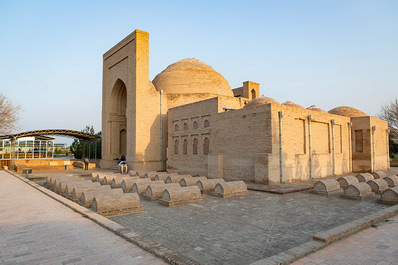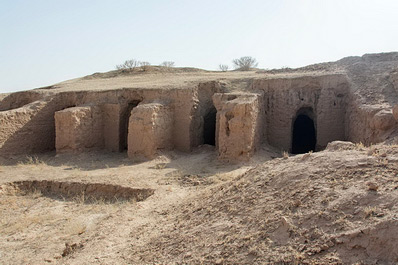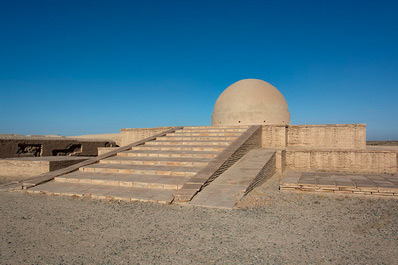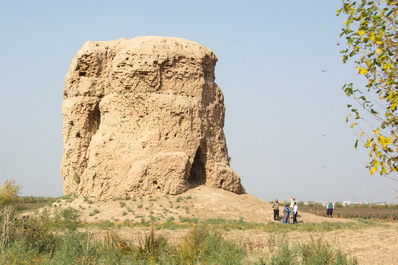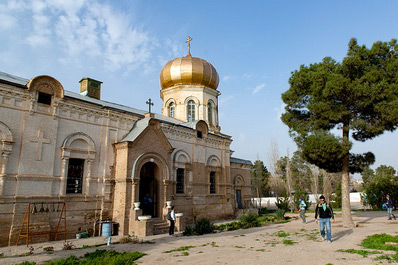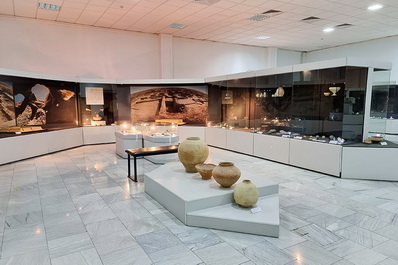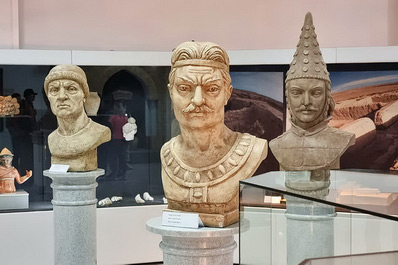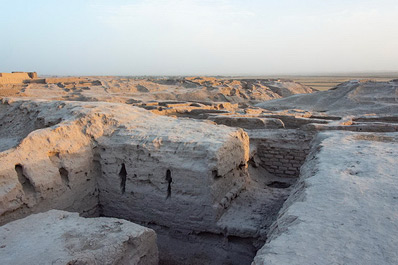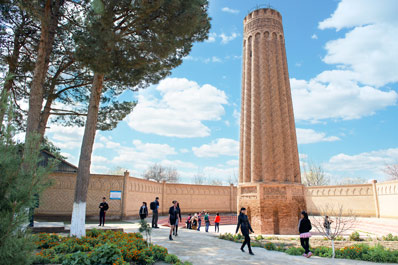Termez, Uzbekistan
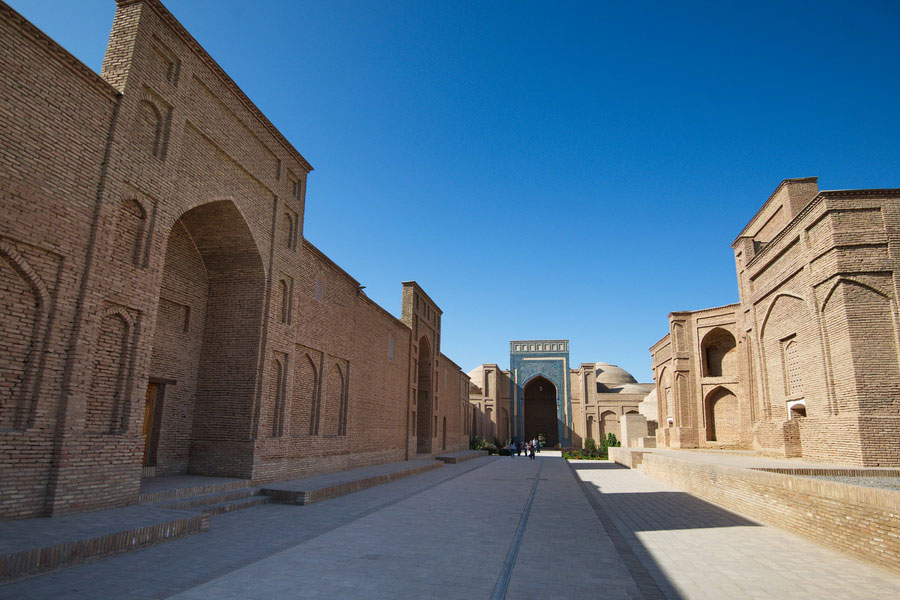
Former Name: Demetris
Altitude: 306 m above sea level
Time Zone: UTC+5
Languages Spoken: Uzbek, Russian
Ethnic Groups: Uzbeks, Russians, Tatars
International Telephone Code: +998 76
Postal Code: 1901XX
Vehicle Code: 75-79
Termez is a historic Uzbek city with a 2,500-year legacy, home to ancient monuments, memorial complexes, and significant Muslim sites. Between the 1st and 7th centuries, Termez was a prominent Buddhist center, attracting pilgrims and scholars from across Asia. Today, it remains a place of reverence, drawing many visitors to its medieval shrines and sacred landmarks.
Located in southern Uzbekistan, Termez borders Afghanistan, with the only Uzbekistan-Afghanistan state border crossing situated nearby. Travelers can reach Afghanistan via the Friendship Bridge, an automobile and railroad bridge connecting the two countries.
For many Uzbeks, Termez is a familiar sight even from afar—the mausoleum of At-Termezi, the city’s patron saint, is depicted on the 50,000 Uzbek soum banknote.
How to Get to Termez
Termez is easily accessible by air, rail, and road.
Regular flights operate to Termez Airport from Tashkent, Moscow, and St. Petersburg.
For those traveling by train, Termez can be reached from Tashkent, Samarkand, and Andijan.
By car, the journey from Tashkent to Termez takes approximately 10 hours. The city is also accessible from Samarkand (376 km) and Bukhara (439 km), making it a feasible destination for road travelers.
Safety in Termez
Termez is relatively safe, but as in any city, it is important to keep an eye on your belongings and documents and avoid leaving them unattended.
Due to its hot climate, visitors traveling during the warm season should bring sunglasses, sunscreen, a hat, and lightweight, long-sleeved clothing for protection from the sun.
Another weather factor to consider is the “Afghan” wind, a dry, dusty wind that blows from Afghanistan. It can create sandstorms, impact air quality, and cause discomfort, sometimes lasting from a few hours to several days. This phenomenon is most common in March but can occur at other times of the year. To stay comfortable, it is advisable to bring protective eyewear and a mask or respirator to shield yourself from dust.
Brief History of Termez
Termez is one of the oldest cities in the world, celebrating its 2,500th anniversary in 2002, though some historians believe it was founded even earlier.
In the 6th century BC, Termez became part of the Achaemenid Empire, and even then, it was already considered an ancient city. In the 4th century BC, Alexander the Great conquered the region, and Termez later became part of the Greco-Bactrian Kingdom. Around the 3rd century BC, it was known as Demetris, named after a local ruler, Demetrius.
Alexander paved a route from Termez to India, which later brought Buddhism to the city. Buddhist monks settled in Termez for nearly eight centuries, leaving behind numerous temples. Scholars believe that merchants from the Kushan Kingdom (which included Termez) introduced Buddhism to China, from where it eventually spread to Japan.
Termez gained prominence as a major trade hub along the Great Silk Road. From the 1st to 3rd centuries, under Kushan rule, the city was called Tarmidigo and became a Buddhist center. Over the next centuries, it was ruled by various empires, including the Hephthalites (5th-6th centuries), the Western Turkic Khaganate (7th century), and the Arab Caliphate (8th century). By the 9th-10th centuries, Termez had grown into an important center for crafts, trade, culture, and science.
Between the 10th and 12th centuries, Termez was controlled by Samanids, Ghaznavids, Karakhanids, and Seljukids. In 1220, the Mongols plundered and destroyed the city, leaving only its southeastern part intact. In the 14th century, under the Timurids, Termez flourished once again, becoming a major trade and diplomatic center. It was through Termez that Rui Gonzalez de Clavijo, a Spanish ambassador to Amir Timur, passed on his way to Samarkand.
During the 18th century, under Manghit rule, Termez declined and was reduced to two small villages, Pattagissar and Salavat. In 1928, Pattagissar was renamed Termez, and in 1929, it was officially granted city status.
Between 1979 and 1989, Termez hosted a Soviet military base during the war in Afghanistan. The Friendship Bridge, located near Termez, was the main route for the withdrawal of Soviet troops from Afghanistan. Today, it remains the only border crossing between Uzbekistan and Afghanistan.
Termez Attractions
Many of Termez's attractions are located on its outskirts or beyond, so a car is essential for traveling distances of around 100 kilometers or more, especially if you plan to visit Kampyrtepa, Jarkurgan Minaret, and Dalverzin-Tepe.
One of the most significant landmarks is the Sultan Saodat Memorial Complex, a family crypt for the Seyyids—descendants of Prophet Muhammad. The first burial here dates back to the 11th-12th centuries, with mausoleums built over time, along with mosques and khanakas, forming a long courtyard flanked by historical structures. Every year, this site attracts hundreds of Muslim pilgrims.
The Kokildor-Ota Khanaka is another religious site, initially built much earlier but reconstructed under the Timurids. This sacred site is dedicated to Kokildor-Ota, and its architecture shows a strong Afghan influence.
The Kyrk-Kyz Fortress, meaning “Forty Girls,” remains well-preserved, but its original purpose is still debated. It may have been a palace, caravanserai, or monastery. According to legend, Princess Gulaim and 40 young women defended themselves here against nomadic raids.
The Hakim at-Termezi Architectural Complex, dating back to the 11th century, is the resting place of Al-Hakim at-Termezi, a renowned Sufi scholar and the patron saint of Termez. Initially, only a mausoleum stood here, but later additions included a mosque, khanqah, guesthouse for pilgrims, and a white marble tombstone, completed during the Timurid era.
Termez was once a thriving Buddhist center, and several Buddhist monuments remain. The Karatepa Buddhist Complex, established in the 1st century, consists of three hills where Buddhist monks built above-ground clay structures and cave monasteries. Wall paintings and a depiction of Buddha in a red robe can still be seen. The monastery was abandoned in the 5th century.
Nearby, Fayaz-Tepa is one of the best-preserved Buddhist temples, shaped like the letter "P". The site includes living quarters, ritual spaces, and a kitchen area. The oldest known Central Asian image of Buddha (1st century) was found here.
Not far from Termez, the Zurmala Tower from the 1st-2nd centuries is believed to have been a Buddhist stupa. Originally over 16 meters high, it now stands at 12 meters, with three Buddhist-themed stones discovered nearby.
The Alexander Nevsky Orthodox Church, built in 1905, is one of the few pre-revolutionary structures still in use. Originally a military church, it was closed in 1927, its domes and crosses removed, and its bell tower demolished. In 1990, it was returned to the Orthodox community.
The Termez State Archaeological Museum is one of Uzbekistan’s most significant museums, housing artifacts from Maverannahr, Bactria, Sogdiana, Ancient Iran, and Parthia. Exhibits highlight the presence of Zoroastrianism, Buddhism, and Nestorian Christianity in the region.
Another historical site 30 km northwest of Termez is Kampyrtepa Fortress, founded in the 4th century BC. Thought to be the remnants of an ancient port city on the Amu Darya, it later became a stop for Silk Road caravans. Uzbek scholar Edward Rtveladze suggested that this could be Alexandria of Oxiana, founded by Alexander the Great. Archaeological discoveries here confirm the peaceful coexistence of Zoroastrians, Buddhists, and Greek deity worshippers.
Located 30 km north of Termez, the Jarkurgan Minaret from the 12th century once stood as a grand structure, but today only its first tier (21 meters high) remains.
On the road from Termez to Denau, you’ll find the ancient site of Dalverzin-Tepe, dating back to the 3rd-4th centuries. Archaeologists have discovered the oldest known chess pieces (2nd century), pottery workshops, and Sako-Sarmatian wall paintings.
Food in Termez
Termez cuisine is known for its unique dishes, many of which are exclusive to this region. One such specialty is chuponcha, a dish made from freshly slaughtered lamb. Unlike most Uzbek dishes, which use seasoned meat, chuponcha relies on the natural flavor of fresh lamb, giving it a distinct taste.
Another must-try dish is byktyrma, a rich and thick mutton soup. This dish consists of slow-cooked meat, onions, and a tomato-based broth. The broth is so thick that it resembles a sauce rather than a traditional soup.
Narhangi is another regional delicacy, somewhat similar to byktyrma but with its own unique twist. It is a hearty meat stew made of mutton, tail fat, carrots, onions, garlic, tomatoes, bell peppers, and various spices. The key to its flavor is slow cooking—the ingredients are stewed for about two hours without adding water, allowing the natural juices to create a rich and flavorful dish.
Termez is also famous for its high-quality lamb, considered among the best in Uzbekistan. Many visitors take home tandyr gusht—mutton that is spiced, cooked in a clay oven (tandyr), and known for its long shelf life. Locals say that tandyr-cooked meat can stay fresh for an entire day without refrigeration, making it a popular food souvenir from the region.
Best Time to Visit Termez
Termez is situated in the hottest region of Uzbekistan, making summer travel challenging due to extreme temperatures. It is best to avoid visiting from June to August, when the heat can be intense. The optimal time to visit Termez is from March to May and September to November, when the weather is more pleasant for exploring the city's historical and cultural sites.


